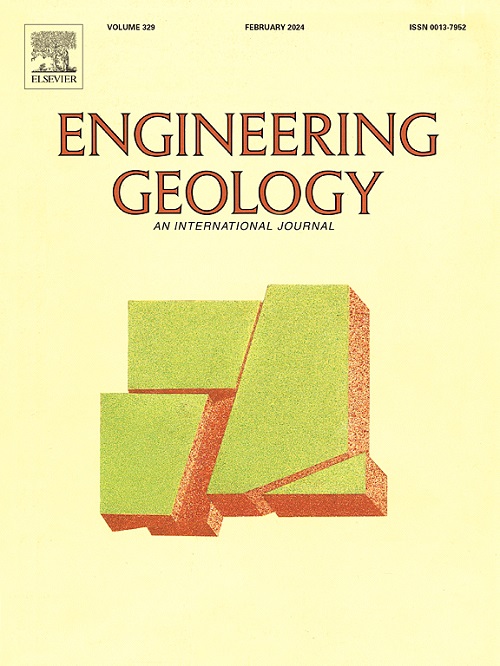Comparison between the Neo-deterministic Seismic Hazard and FEM approach to assessing 2D local seismic response at Chieti's city site (Abruzzo, Italy)
IF 6.9
1区 工程技术
Q1 ENGINEERING, GEOLOGICAL
引用次数: 0
Abstract
A new application of the Neo-Deterministic Seismic Hazard Assessment (NDSHA) to free field seismic hazard at the site is illustrated. This physics-based scenario approach is used to assess the seismic response at Chieti's city center (Abruzzo, Italy) along a laterally varying representative section. The results are compared with those obtained through the AlgoShake2D Finite Element Method (from now on simply FEM) in the same section. Both methods employ a viscous-elastic rock and soil dynamic behavior. In addition, non-linear analyses are performed with FEM method. NDSHA models the directivity and the dispersion due to the medium anelasticity along the propagation path of P and S seismic waves incoming from the bedrock of the section, while FEM uses the popular but very simplified assumption of vertical upward propagation to the surface of only SH waves. FEM implements the equivalent linear approach to simulate the non-linear behavior of soil material under seismic wave solicitations. In Chieti's case study, both FEM and NDSHA results underline how much the stratigraphy contributes to the distortion (amplification/reduction) of the propagating perturbation compared to the reference regional average propagation (1D), as opposed to the topography. FEM acceleration response spectra (both viscous-elastic and equivalent-linear) are naturally enveloped by NDSHA 95% percentile spectrum although the median spectrum and the FEM mean spectrum show similar shapes. The NDSHA amplification functions are larger than the FEM ones, especially for periods lower than 0.5 s. This result can be attributed to the too-simplistic body wave propagation simulated by the FEM approach. The most amplified zone is located at the foothill and the amplification is 3.5 on average below 0.5 s. Although both methods predict a secondary role of the topographic effect, the NDSHA causal signals that consider the directivity of the wavefield, its complex refraction within the propagation medium (Chieti's vertical section), and some possible complexities of the earthquake source indicate that higher amplifications than FEM's ones should be accounted for when more realistic simulations are available. Based on the precautionary principle, given the complexity of real earthquakes, it is therefore natural to recommend the routine use of NDSHA.

求助全文
约1分钟内获得全文
求助全文
来源期刊

Engineering Geology
地学-地球科学综合
CiteScore
13.70
自引率
12.20%
发文量
327
审稿时长
5.6 months
期刊介绍:
Engineering Geology, an international interdisciplinary journal, serves as a bridge between earth sciences and engineering, focusing on geological and geotechnical engineering. It welcomes studies with relevance to engineering, environmental concerns, and safety, catering to engineering geologists with backgrounds in geology or civil/mining engineering. Topics include applied geomorphology, structural geology, geophysics, geochemistry, environmental geology, hydrogeology, land use planning, natural hazards, remote sensing, soil and rock mechanics, and applied geotechnical engineering. The journal provides a platform for research at the intersection of geology and engineering disciplines.
 求助内容:
求助内容: 应助结果提醒方式:
应助结果提醒方式:


